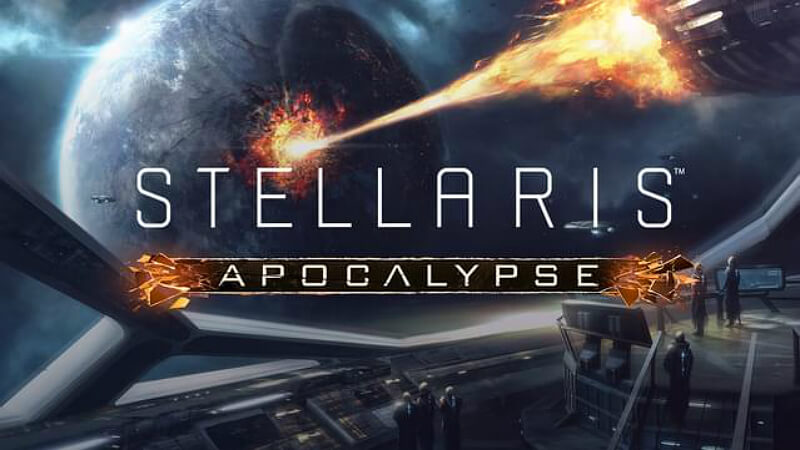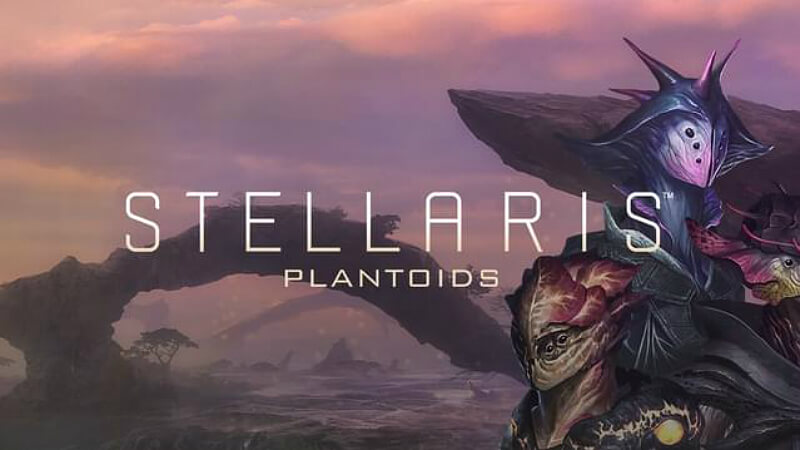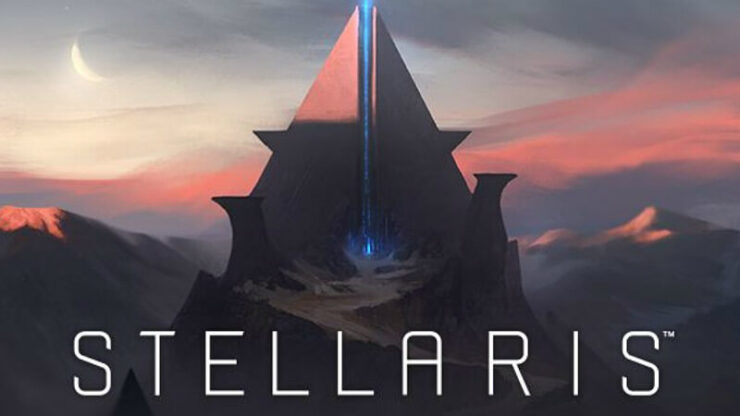I see a post asking which DLC should be bought at least once per day on here, it seems. I understand perfectly well why people ask it, but I also find it annoying to have to rewrite everything over and over again. So this is going to be an attempt to create a single post that describes what each DLC brings to the game, and whether or not an individual DLC is worth picking up.
I’m going to do my best to be as objective as possible about this, but obviously, it’ll be pretty hard to keep my opinion from influencing it. Expect ratings to change as new expansions come out, and especially as things like the 2.0 patch happen, where parts of a paid DLC were folded into the base game. Anyway, onto the list, which I’ll do my best to update as new DLC comes out, and keep it ordered from newest to oldest.
Current overall ranking:
Utopia > Distant Stars > Apocalypse > Synthetic Dawn > Leviathans > Humanoids > Plantoids
Ranking if you aren’t interested in robots:
Utopia > Distant Stars > Apocalypse > Leviathans > Synthetic Dawn > Humanoids > Plantoids
My opinion on best to worst is listed from left to right, although feel free to get what suits you better.
Distant Stars

A common theme throughout the rest of this article will be comments on the raw amount of additional content provided by the DLC. That said, Distant Stars adds a lot. Between a few new pre-scripted systems, several new Leviathans, a mysterious new section of the galaxy that has been cut off from the rest of it, and dozens of new anomalies, both veterans and new players alike will find a lot of exploration waiting for them.
There’s a lot that I want to say about the content that is added, but unlike that provided by the other DLCs on this page, much of what I could say would spoil a lot of the fun. What I can say is the quality and rewards from the new anomalies fit in very well with those from the base game, the leviathans are every bit as interesting as those provided by the DLC of the same name, and somewhere in this DLC is the potential to reshape the political landscape of the galaxy.
Owners of Distant Stars who don’t also own the Leviathans DLC will be given access to the Curator Enclaves, as those will offer to sell the player information on the new leviathans, in addition to offering up their services to improve your empire’s science production.
I actually had been price-neutral on this list until this entry, but the $10 price point is in some ways a bargain for what it adds. I’m giving this one a 9/10 for the sheer amount of flavor, options, and events.
Apocalypse

This one easily belongs right up there with Utopia in terms of gameplay additions. While it doesn’t add much in the way of internal effects in the way Utopia did, Apocalypse adds an extremely relevant external threat, in the Marauder empires, that will definitely change how you play early on and right up until you finally are strong enough to challenge them directly. Furthermore, there are new Unity Ambitions that can be unlocked in the late game, which allow you to spend unity in order to gain an empire-wide bonus, giving you something to do with your unity once the traditions have been filled out.
On top of this, Apocalypse introduced several other ways to customize your empire. There are three new civics, Life-Seeded, Post-Apocalyptic, and Barbaric Despoilers, each of which brings different gameplay to the empires that choose to adopt them. The first lets you start out on as near to a perfect world as you can get, a 25 tile gaia world, but as a consequence, your starting species has no ability to inhabit non-gaia worlds. The second lets you start out on a tomb world, and grants your species both an enhanced lifespan for its leaders and the ability to colonize other tomb worlds, but your starting world is slightly worse than other empires’ and costs more to fully build up. Finally, the barbaric despoilers are effectively pirate slavers, and are an empire whose primary purpose is to invade other empires’ planets and steal their population to bring back to their own worlds for cheap and easy slave labor. As you can imagine, they have a difficult time diplomatically.
And of course, let’s not forget the flagship addition from the DLC, Titans, and Colossi. For those of you who have always wanted flagships and planet-killer weapons, these are for you. Titans not only sport the strongest weapons in the game, but they also bring auras that buff your other ships. Meanwhile, Colossi allow not only the ability for you to destroy planets in a variety of ways, but also the ability to declare war indiscriminately upon your neighbors.
The final rating on this one is an 8/10, dropped down due to the release of Distant Stars.
Humanoids Species Pack

All the species packs offer the same benefits. Namely, new portraits, name lists, and a new class of ships. The Humanoid Species pack offers up the new portraits seen here, on the second row. It also adds a new ship type, Humanoid, which comes complete with new designs for all standard ship classes, for mining and research stations, for defense stations, and for spaceports. Finally, it offers three new generic advisor voice packs.
There’s been some controversy over this, mainly complaints about how limited the portraits are in terms of customization. In general, though, it’s a purely cosmetic pack. If you like the look of the portraits and ships, go for it. If you don’t, then give it a pass.
Final rating: 2/10. Get it only if you like the looks and have all the other DLCs. The voice packs make this slightly better than the Plantoids pack.
Synthetic Dawn

Synthetic Dawn adds a lot of new content to the game, but it’s almost entirely for people who use robots or want to play as a robot empire. The main benefit of the expansion is getting to play as a Machine Intelligence empire type, a new type of Gestalt Consciousness, itself an empire type introduced in Utopia, although having access to any Gestalt Consciousness will let you play as one. As they are Gestalt Consciousnesses, all Machine Intelligence types share a few bonuses meant to make up for the losses of not being a traditional empire. There are also various changes made to buildings, technologies, events, and traditions, some of them focused on flavor, others on mechanics, meant to tweak them to be more relevant to Machine Intelligence gameplay.
Alongside a standard Machine Intelligence, you can also play as Driven Assimilators, Rogue Servitors, and Determined Exterminators, each of which alter the core playstyle of a Machine Intelligence significantly. Driven Assimilators function like the Borg, ever in pursuit of new life to enhance and expand their own ability to survive. Rogue Servitors are best described as nanny bots gone rogue, and they want to continue pampering the biological species living under them whether they want it or not. Determined Exterminators just want to kill all humans, is that too much to ask?
Some of the minor additions include a new Fallen Empire type, a possibly malfunctioning Machine Intelligence, that lives on a mostly-intact ring world. For balance reasons, the Materialist FE will inhabit the standard Gaia worlds the other FE types get when Synthetic Dawn is installed. There are a couple Machine Intelligence-only Ascension perks that can be picked up, one which allows the creation of machine worlds to boost your robots’ output, and the other allows for greater customization of your machine pops. Finally, this DLC offers new advisor voices, one for each of the major empire ethos, one for hive minds, and one for machine intelligences. And honestly, these are so good they almost make the expansion worth it.
Final rating: 6/10, 8/10 if the idea of playing as a machine intelligence sounds awesome. This one is actually hugely divisive, as you’ll see in the comments. If you really don’t like the idea of playing alongside machine intelligences, never want to play as one, and think the Materialists should still be on the ringworlds, then pass this one up for Leviathans. Otherwise, even if you don’t plan on playing as a machine empire, I feel it’s still worth picking up over Leviathans for the way they can change the galactic playing field.
Note: Even though the old crisis was remade into a Synthetic Dawn exclusive event, a new crisis was introduced to everyone as part of the update.
Utopia

The first major DLC to come to Stellaris, Utopia is still the most relevant DLC to all playstyles, even with some of its content reintegrated into the base game. Unlike Synthetic Dawn and Apocalypse, Utopia added several different categories of new content, instead of focusing on just one.
Ascension Perks were probably the biggest thing originally added by this DLC. While the majority of these were folded into the base game, some of the best, most interesting, or otherwise most gameplay-changing ones are still locked behind this expansion. The two big categories of perks unlocked with this DLC are most of the Megastructures and the Ascension Paths.
Megastructures are gigantic space-based constructions that take orders of magnitude more minerals than anything else you can build. The basic Megastructure is the Habitat, which is a relatively small space station with unique buildings that offers universal habitability for up to 12 different pops. The upgraded version of the Habitat is the Ringworld, which requires a large stockpile of minerals in addition to the raw materials present in every planetoid in the system to construct. There are also several unique Megastructures, the Dyson Sphere, which harnesses the power of a star for incredible amounts of energy, the Science Nexus, which is a space facility that grants an immense boost to your scientific research, and the Sentry Array, which is a sensor platform that eventually grants you perfect vision in every system of the galaxy, including places that would otherwise block the view of your sensors. Alongside the ability to build these, you can also repair any ruined Megastructures you may find in the galaxy, be they the ringworlds of a Fallen Empire, or just remnants of a bygone era.
The Ascension Paths allow you to choose between one of three destinies for your empire. You can awaken the latent psionic potential of the species in your empire, gaining bonuses for your leaders and the ability to delve into the Shroud for even further benefits. You can instead choose to forego the flesh, replacing the body of every member of your species with immortal machine bodies, gaining an empire of synthetics, with all the bonuses and penalties that implies. Or you can choose to take control of your evolutionary destiny, gaining more and better options for genetically modifying your species. Each of these can be used on species who come into your empire at a later date, as well, granting them the same psionic or synthetic benefits.
There were also new playstyles introduced with Utopia. Hive Minds, the original Gestalt Consciousness before they were called that, were first introduced with this expansion. Along with Hive Minds came the Devouring Swarm civic, which lets you play as a ravenous, all-consuming Hive Mind that seeks to eat any and all biological life that isn’t the swarm.
Other civics introduced with this expansion are Fanatic Purifiers, Syncretic Evolution, and Mechanist. The first lets you play as a race of space nazis, dedicated to exterminating all not-us life in the galaxy. The second allows you to start the game with a second, subservient species as customized by you. And the third allows you to start the game with robots unlocked, granting you the techs to build more and reducing their upkeep.
There are other, minor changes, but these are the big ones. And as a result, this will be staying a 10/10 recommendation until more of this expansion is taken away and made part of the base game. I don’t foresee another expansion that adds as much as this one did.
Leviathans

This DLC offers some interesting mid-to-late game challenges to unlock, as well as a potential early-to-mid game miniquest. It’s ultimately a bunch of stories revolving around gigantic spaceborne aliens, some of which are thought to have invaded from other universes, others are relics from the dawn of time, or simply ancient constructs gone rogue.
In addition, there are neutral space stations that can be treated with to gain various benefits. Traders that allow you to exchange energy for minerals and vice versa monthly at a 2-for-1 rate, and unique strategic resources that can stack with other resources that offer the same benefits. Scientists, who sell information on the galaxy, the above leviathans, or sell their own services to increase your science output. Artisans, who can provide entertainment for your worlds, and who will sell you artwork that can be erected on your worlds.
Finally, the War in Heaven can trigger between two Fallen Empires. A fallen empire can awaken as normal over the course of the game, typically when another fallen empire gets knocked out, or sometimes when the inferior races of the galaxy get uppity and start having powerful enough fleets to maybe be of concern to the fallen empire. However, with Leviathans, when one empire awakens, another may see their millenia-old rival gearing back up for war, and remember that time they borrowed the metaphorical weed whacker and forgot to return it, and by god, they’re going to get their weed whacker back. Even if they have to burn down the galaxy to do so.
Final Rating: 5/10. The story events are neat, and offer some different twists to gameplay to shake things up a bit from one playthrough to another, but outside of the enclaves nothing it adds is truly useful to any given empire. It’s worth picking up eventually, but you aren’t missing much by not having it.
Plantoids Species Pack

Remember the Humanoids Species Pack up there? Go back and re-read it, but mentally swap ‘humanoid’ with ‘plantoid’. Controversy included. Portraits here.
Also, no new advisor voices with this one.
Final Rating: 1/10. 3/10 if you’re really attached to the idea of playing Groot.
Original Link – Continuation of discussion






Add comment